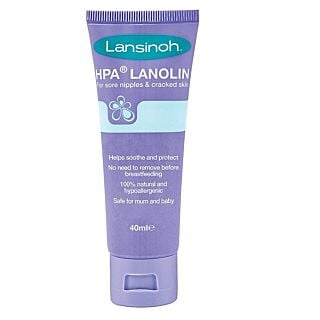The nutrients you need if you're breastfeeding

Breastfeeding is one of the best things you can do for yourself and your baby. Not only does your breast milk provide your baby with all of the essential nutrients they need to grow up strong and healthy, but it also lowers their risk of contracting nasty infections and serious illnesses.
Let’s not forget about you! Your body is working hard to provide your baby with everything they need, but what nutrients do you need while you’re breastfeeding to ensure that you’re staying strong and healthy, too?
In this guide we’ll talk about how breastfeeding affects your body, with all of the nutrients you should include in your diet and the things you should avoid. As part of World Breastfeeding Week, we’re honing the focus on you.
It’s very easy to forget to look after yourself when your little one depends on you, but it’s also important to take time to nourish the body that feeds them with all of that wonderful breast milk!
How does breastfeeding affect your body?
Many nursing mothers will know the benefits of feeding your baby breast milk compared to infant formula: it’s perfectly tailored to your baby’s needs, it’s available whenever they need it, it protects them from infections and diseases, and it can strengthen the emotional bond between the two of you.
However, fewer nursing mothers know how breastfeeding can affect their own body. Actually, it does have some surprising benefits for mothers – it’s not all negative!
Although breastfeeding can cause things like painful, cracked nipples, it can also lower your risk of developing serious conditions such as:
- Breast cancer
- Ovarian cancer
- Osteoporosis
- Cardiovascular disease
- Obesity
The nutrients you need if you’re breastfeeding
So, what nutrients do breastfeeding women need? Keep reading and take note of the nutrients you should include in your breastfeeding diet and what you shouldn’t. Follow a vegan or a vegetarian diet? No problem! You can still get all of the nutrients you need from your meals by making more informed food choices.
Protein
Protein is an essential breastfeeding nutrient to include in your diet, and it’s recommended that nursing mothers consume an extra 25 g of protein each day. It also helps to produce breast milk, in addition to it nourishing and supporting your baby’s growth.
Some good sources of protein include: meat, fish, eggs, cheese and yoghurt. If you’re vegan or vegetarian, nuts, seeds and legumes are safe, healthy protein options.
Calcium
Calcium is always an important mineral to include in your diet, even if you don’t breastfeed your baby. However, your body’s demand for calcium increases while you’re pregnant and breastfeeding.
Dairy foods such as milk, cheese and yoghurt all contain calcium and are also a good source of protein. Non-dairy options include tofu, brown bread, pulses and dried fruit.

Iron
When you’re pregnant, the iron in your body is used to sustain your baby. So, when you’re breastfeeding, you need to fill your iron stores back up! To do so, choose things like red meat, chicken, legumes, nuts, dried fruit, whole grain bread, cereals and leafy green vegetables.
Iodine
Iodine supports your baby’s brain development, so it’s a key nutrient to add to your breastfeeding diet. Foods rich in iodine include seafood and shellfish, but many breastfeeding multivitamins will provide you with enough iodine, too.
Fibre
After you’ve welcomed your bundle of joy into the world, some women may experience bowel problems like constipation. Thankfully, fibre can help with this! Include plenty of wholemeal bread, pasta, cereals, rice and pulses into your diet to make a difference to your bowel habits.
Vitamins
You’ll get the benefit of vitamins by following the NHS recommended 5 pieces of fruit and vegetables per day. To get vitamin C, look for citrus fruits, berries, tropical fruit, tomatoes and potatoes. For vitamin A, introduce dark green and yellow vegetables into your diet like broccoli, carrots and pumpkin.
Everyone, including pregnant and breastfeeding women, should take a vitamin D supplement each day, especially during the autumn and winter months when the sunlight is sparse.
The food and drink you should avoid while you’re breastfeeding
You know what food and drink to include in your breastfeeding diet, but now it’s time to discuss all of the things you shouldn’t have – or at least, shouldn’t have too much of. We’ll apologise in advance, because caffeine is on that list, unfortunately!
Fish with a high mercury content
If your baby is exposed to high levels of mercury through your milk supply, it can permanently impact their nervous system, affecting cognition, motor skills, speech and language development, and visual-spatial awareness.
If your baby is breastfed, avoid fish with a high mercury content, like shark, bigeye tuna, king mackerel, marlin, orange roughy, swordfish and tilefish.
Alcohol
We know, you’ve waited a full nine months to have an alcoholic drink and now we’re telling you to avoid it even while you’re breastfeeding? Hear us out!
An occasional drink is fine, but you should still be careful about the amount you drink and the timing. Whether alcohol can affect your baby through your breast milk depends on how much alcohol you’ve had and when you had it.
Due to this, it’s recommended to limit your alcohol consumption to just one standard drink per day and wait at least 2 hours before choosing to breastfeed.
Caffeine
All of the tastiest things contain caffeine: coffee, tea, chocolate and fizzy drinks. However, when you consume caffeinated products, some of that caffeine seeps into your breast milk, which isn’t good news where your little one is concerned!
Your baby’s body finds it tricky to break down and get rid of caffeine, which can result in large amounts of caffeine building up over time, causing irritability and sleep problems – this isn’t good news for you, either!
We know, you’re tired and caffeine is the only thing that makes those constant wake-up calls manageable, but you might actually be stuck in a vicious circle. You’re having caffeine because you’re trying to stay awake, but your baby could be awake because of all that caffeine in their system.
Why not give the caffeine a break and see if things improve?

Breastfeeding is hard work and it can really take its toll on your body, both physically and mentally. Trust us, you’re doing amazing – think about it, you’re single-handedly sustaining life! But remember, while you’re breastfeeding, it’s still important to prioritise yourself as well as your baby. They are what you eat, after all!
If you need further advice about your breastfeeding diet, visit the NHS website. Looking to get involved in World Breastfeeding Week? You can visit their website here to support other women like yourself who are stepping up to protect, promote and support breastfeeding across different levels of society.






